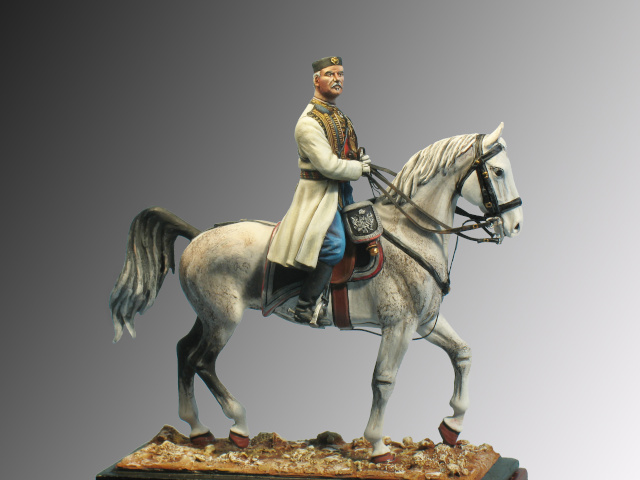You must be logged in to post a review.
Nicholas I of Montenegro
€65.00
Figure to assemble and paint
Ref.: 13 – RyE
Weight: 240 grs.
Material: White Metal
Number of Pieces: 15
Historical Review:
Nicolas I (Njegos, 1841 – Antibes, 1921) King of Montenegro from 1910-1918, after transforming Montenegro from a principality into a kingdom. The son of Mirko Petrovich and Anastasia Martinovich, he was named heir to his uncle Danilo II, who had no descendants, due to Mirko’s renunciation. He studied in Paris and Trieste. In August 1860, Nicholas assumed the throne after Danilo’s assassination. Throughout his reign he was faced with the task of popularising western roads. Soon after his coronation he married Milena, daughter of the voivode Peter Voukotich.
He showed himself to be an outstanding leader and military man from 1862, participating in the Herzegovinian insurrection against Turkey that ended in the peace of Scutari. A visit to Montenegro by Alexander II of Russia in 1868 was the starting point for the personal friendship of the two monarchs and the future collaboration between Russia and Montenegro, which took the form of giving Montenegro arms and money; Alexander even supported Nicholas’ candidacy for the Serbian throne on one occasion.
In 1875, at the time of the Bosnian uprising, Nicholas, who had a well-armed army of 15,000 soldiers, formed an alliance with the Bosnians against the Turks and continued the war successfully until 1878. Among his major military achievements in this war were the captures of Antivari (which gave his country the longed-for outlet to the Adriatic) and Dulcigno in 1878. The Congress of Berlin, which ended the war, not only recognised Montenegro’s independence (13 July 1878), but also increased its territory.
Although both Montenegro’s resources and cultural level were small and the progress made in the last 50 years was insufficient, Nicholas managed to increase Montenegro’s importance in Europe through his excellent relations with Russia, Italy and Serbia. A clever diplomat, he strengthened his dynasty through the various marriages of his sons. In Balkan politics, Nicholas acted both for and against Serbia to bring about the creation of a South Slav state.
In December 1900 Nicholas gave himself the title of Royal Highness and his policies began to confirm his authority, until in 1905 he was forced to grant a constitution and an elected national assembly. However, political dissension continued, culminating in the Cetiña attempt (1907) against Nicholas himself. On 28 August 1910, with the consent of all the powers of the state, Nicolas proclaimed himself king. On that occasion the friendship between Montenegro and Russia became clear, with the appointment of the new king as marshal of Russia, his heir as major general and Prince Mirleus as lieutenant colonel in the Russian army.
Hoping to gain prestige by conquering territory, Nicholas entered the Balkan Wars against Turkey (1912-1913). In World War I he supported Serbia against the Austro-Hungarian Empire, but after its defeat he concluded a separate peace with Austria in January 1916 and went into exile in Italy. When the Serbs entered Montenegro after the defeat of Austria-Hungary, Nicholas and his dynasty were formally deposed by a national assembly (26 November 1918) and Montenegro was incorporated into Serbia, later becoming part of the Kingdom of Serbs, Croats and Slovenes (Yugoslavia).
In the figure, Nicholas I is wearing national dress, in which the only means of identifying rank – apart from the other’s own wealth – was the design of the cap badge. He commonly carried a 45 ‘Smith & Wesson revolver tucked into his sash.








Reviews
There are no reviews yet.